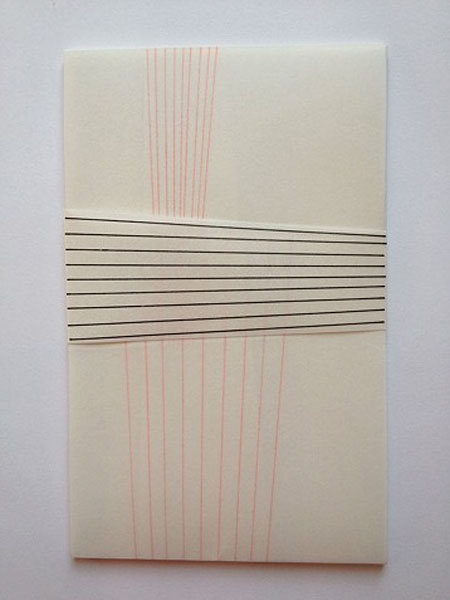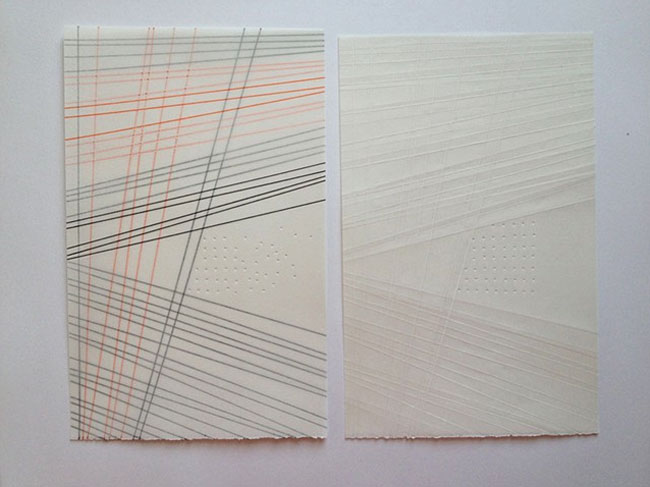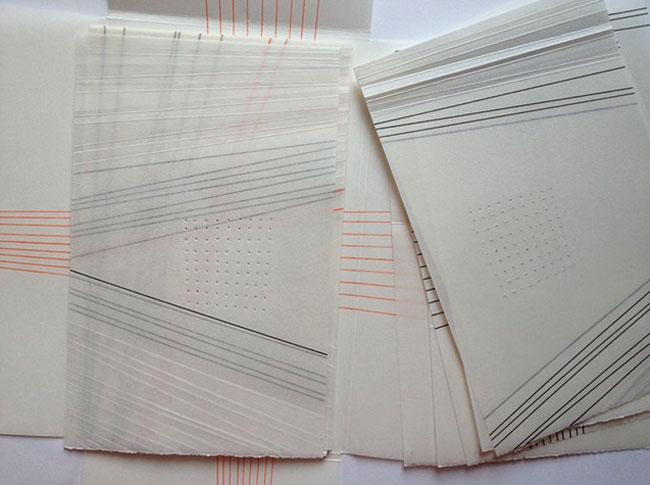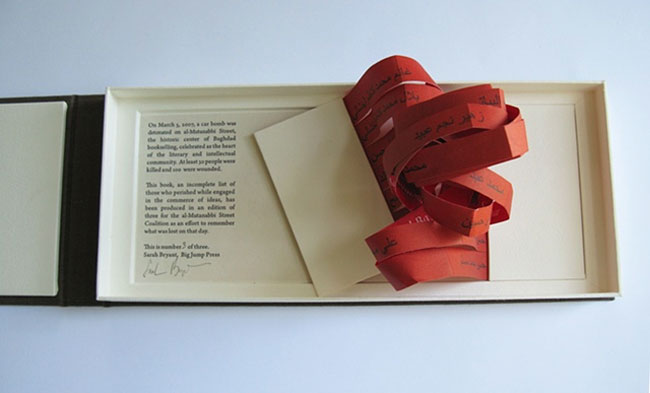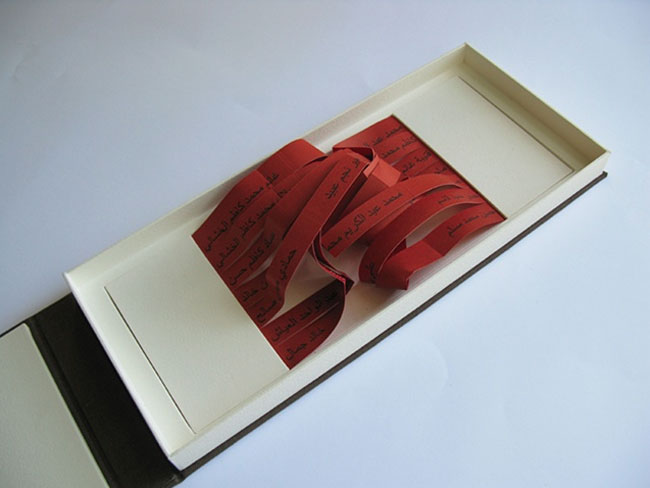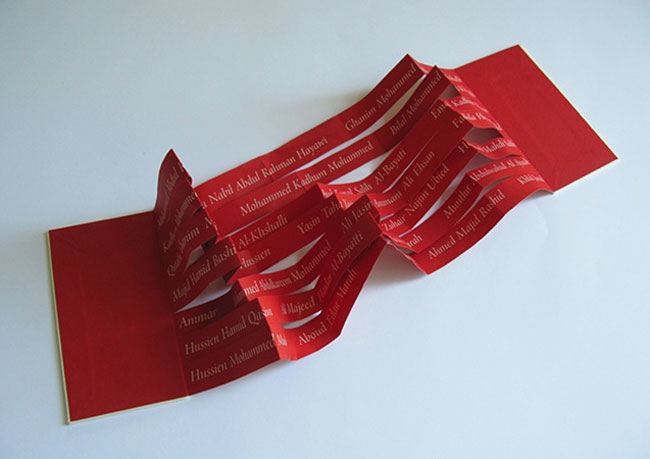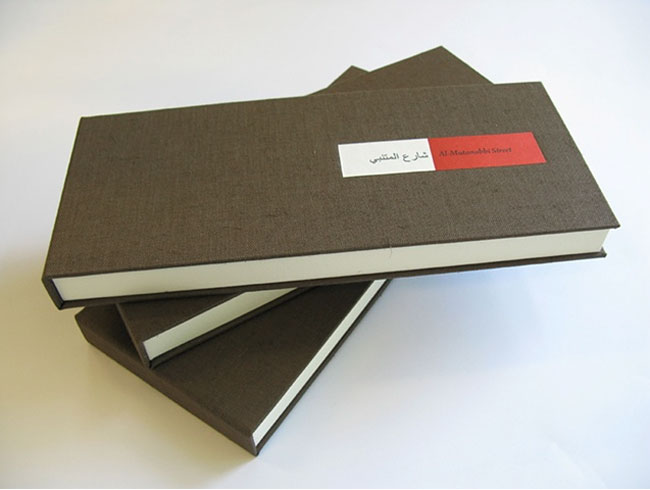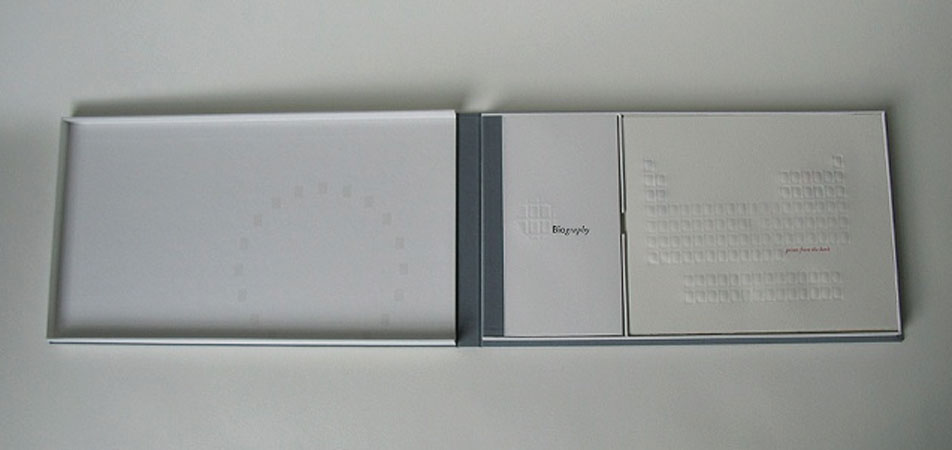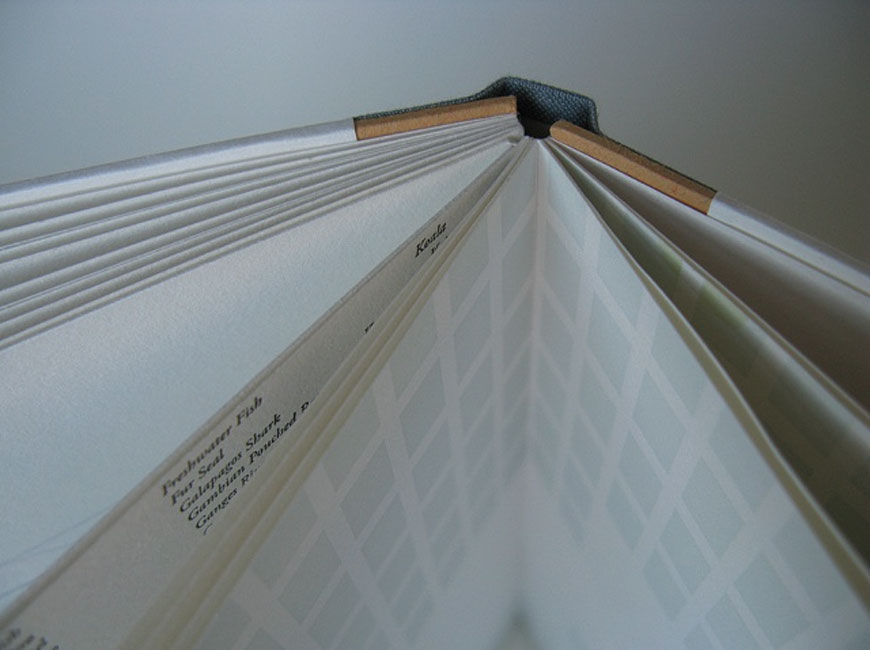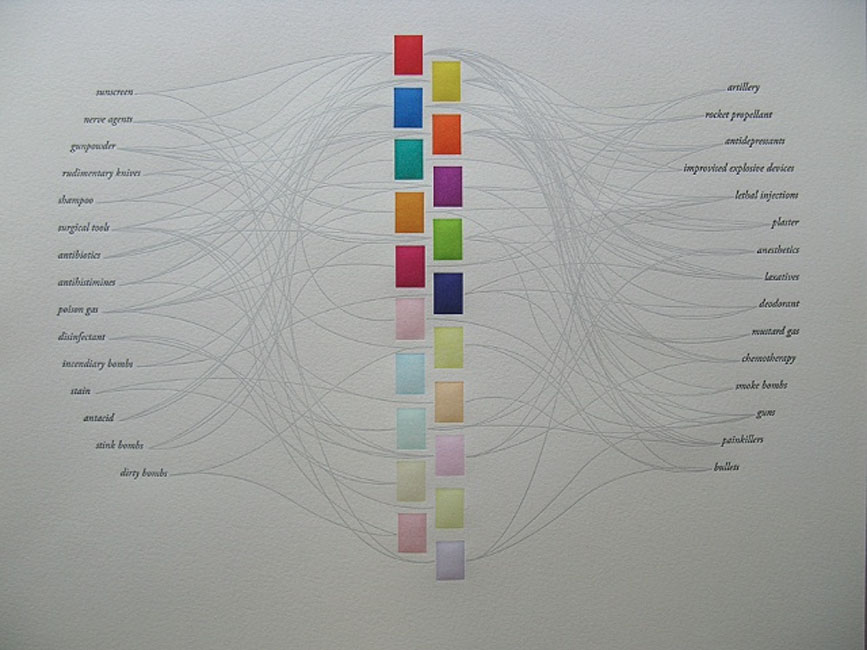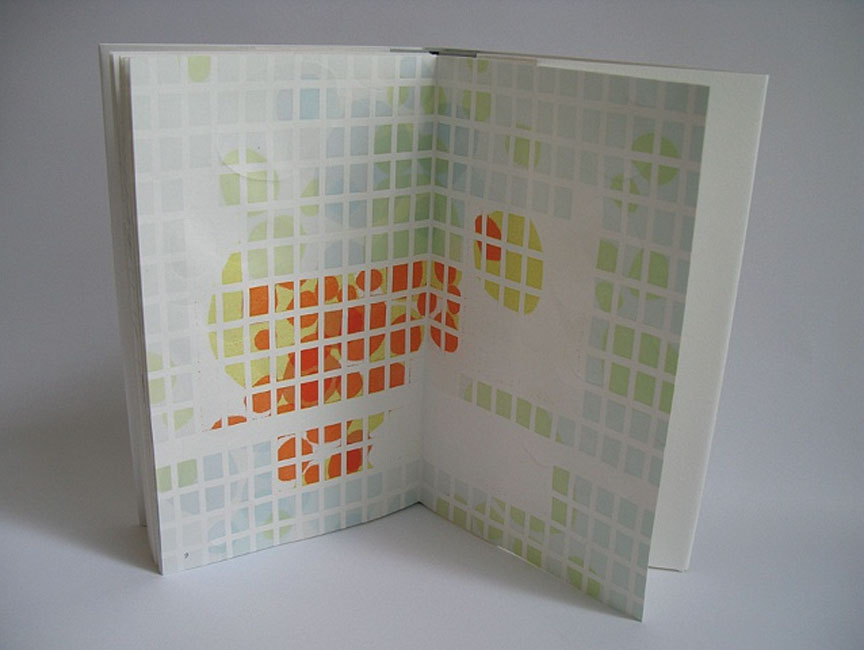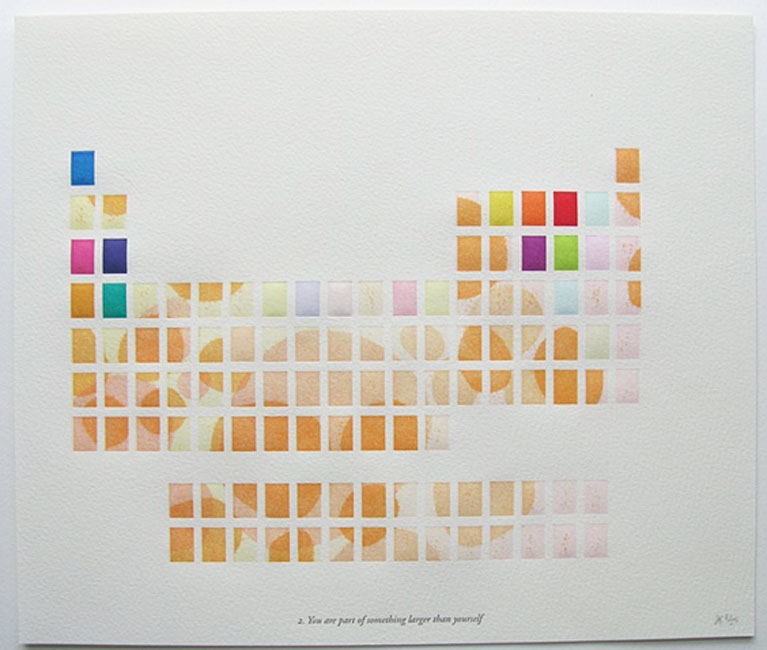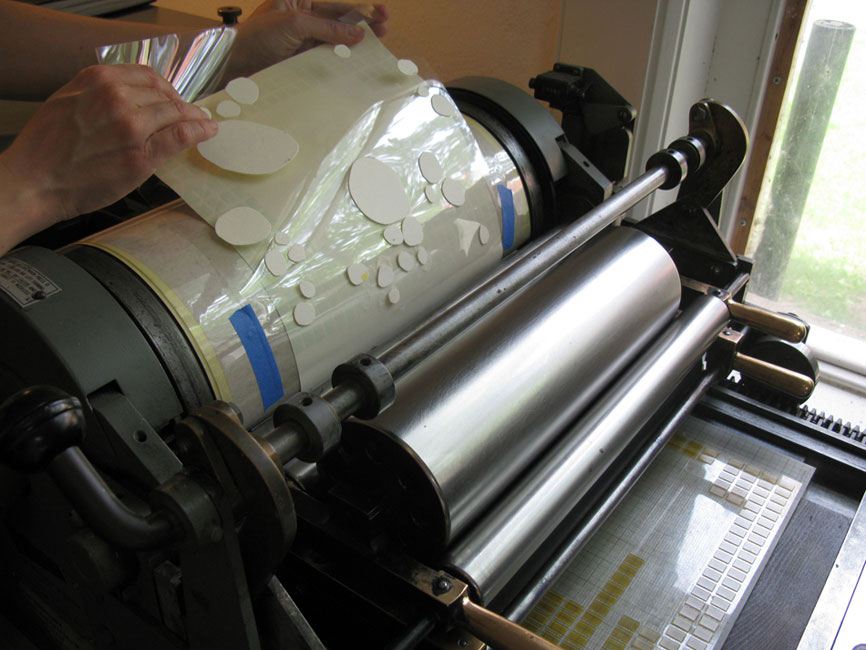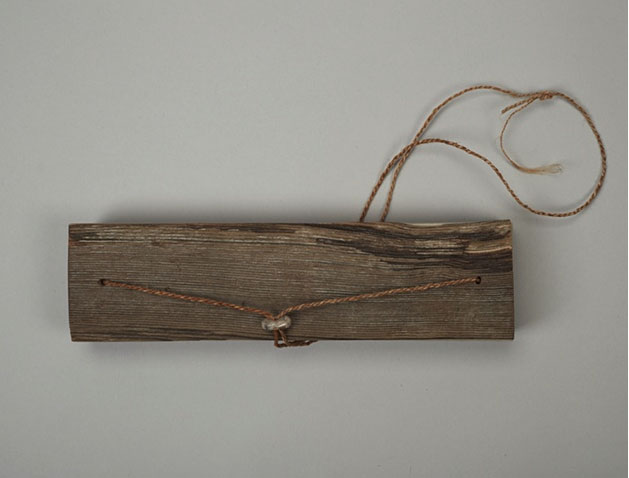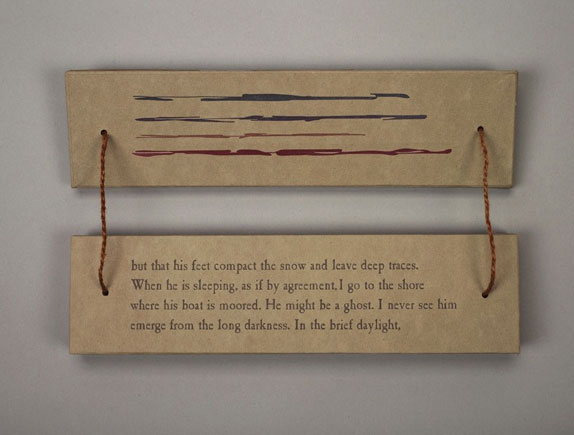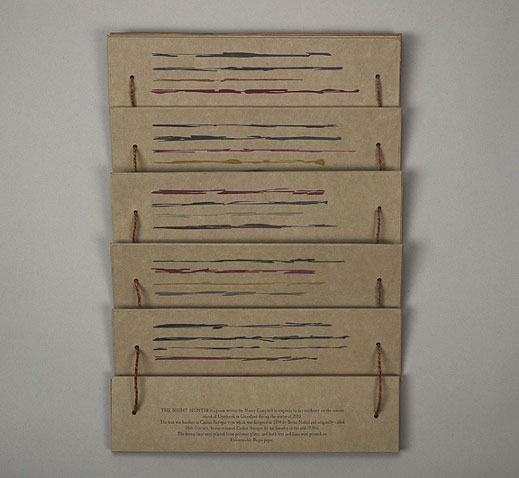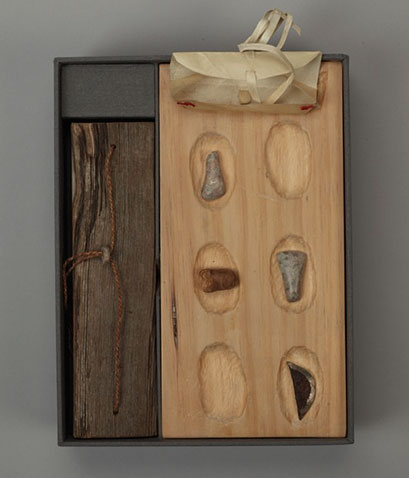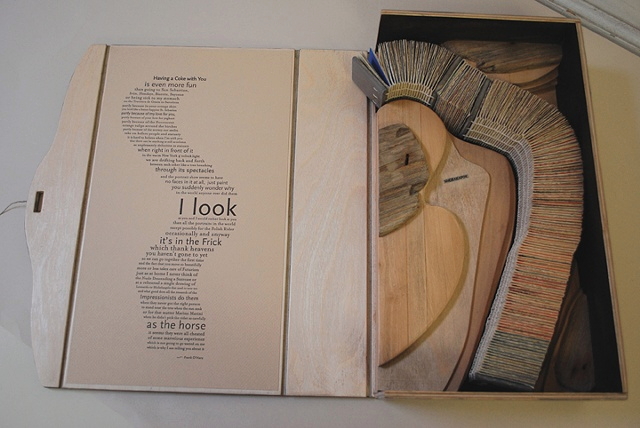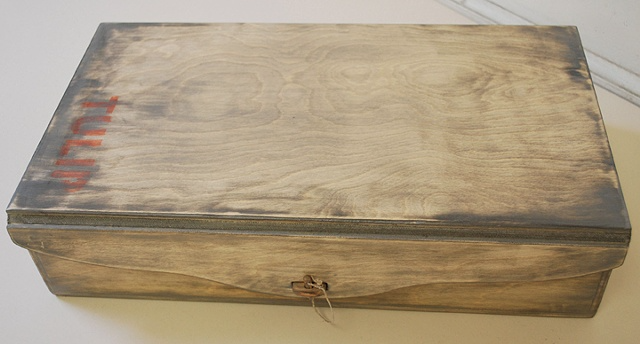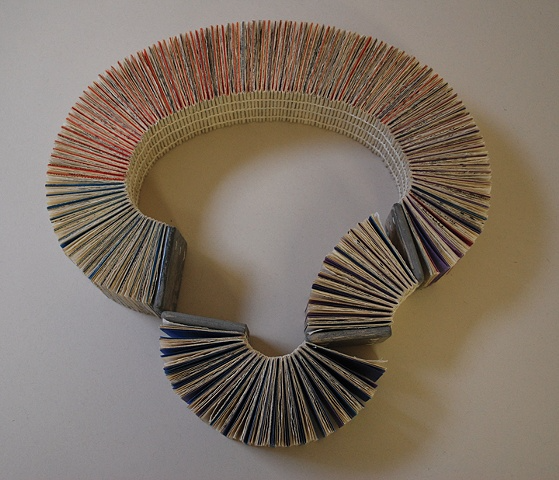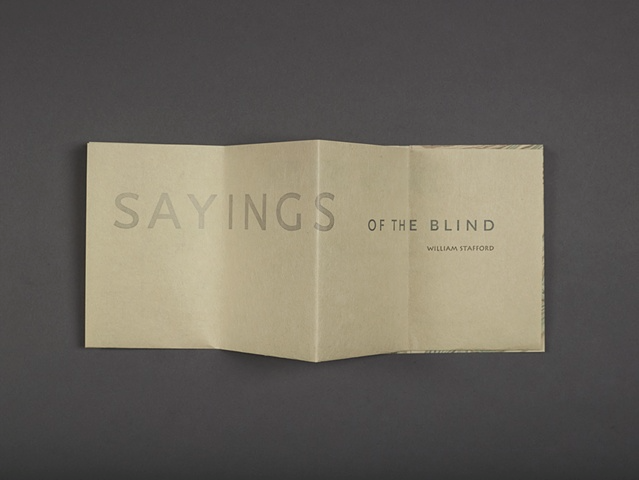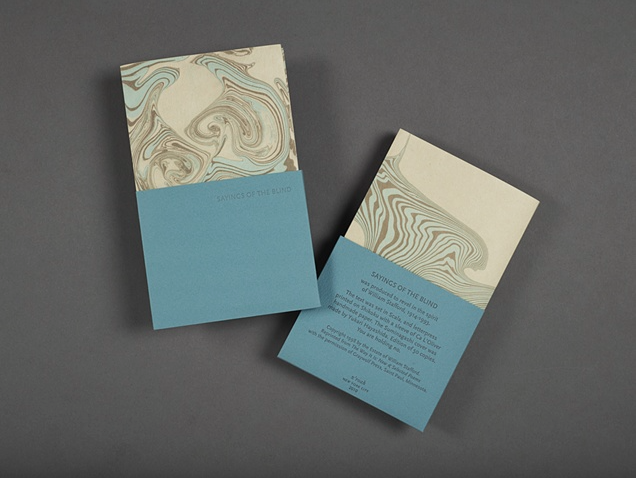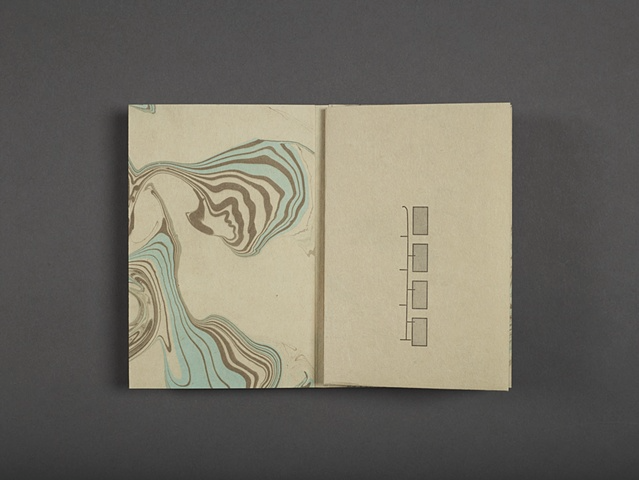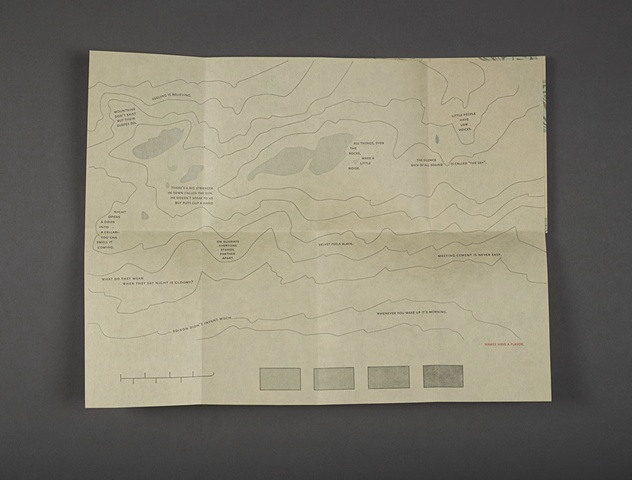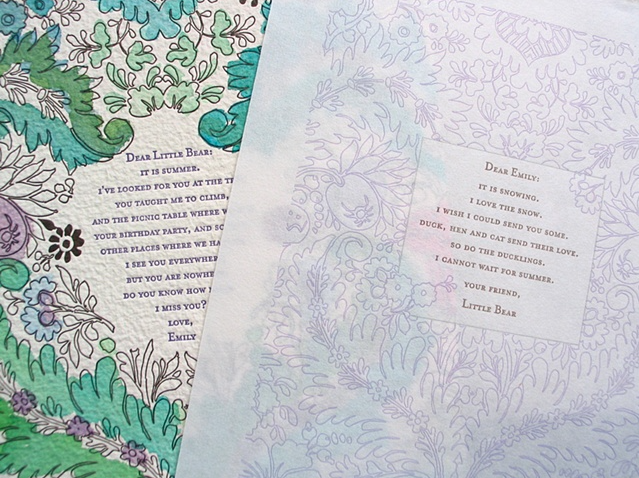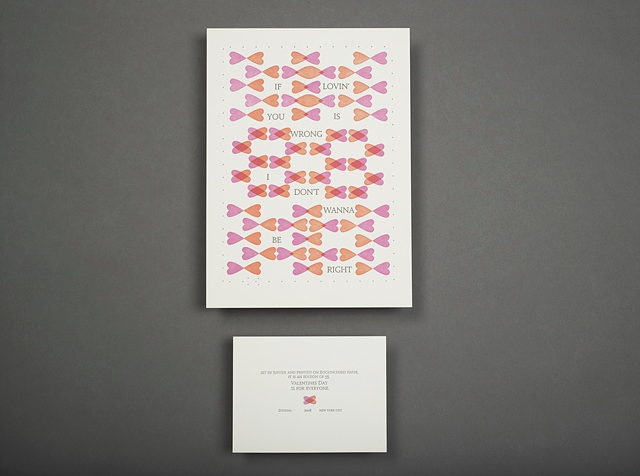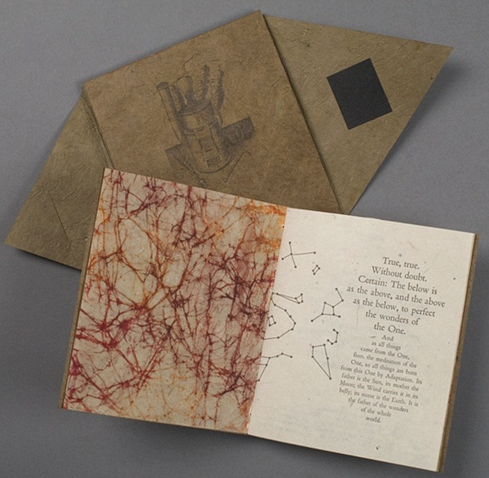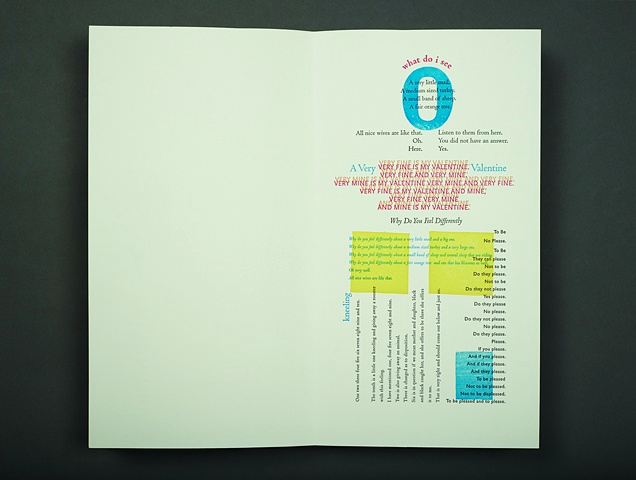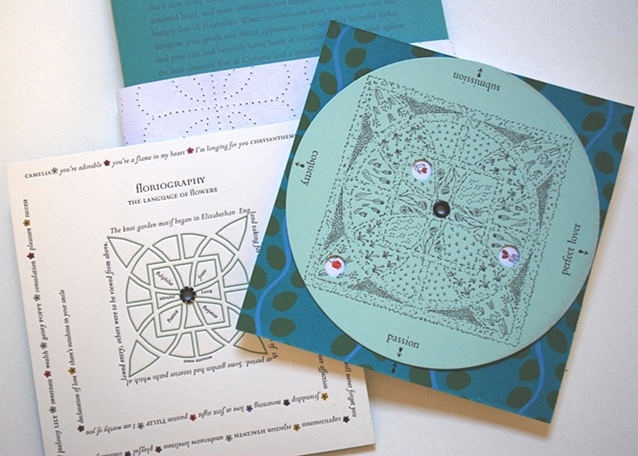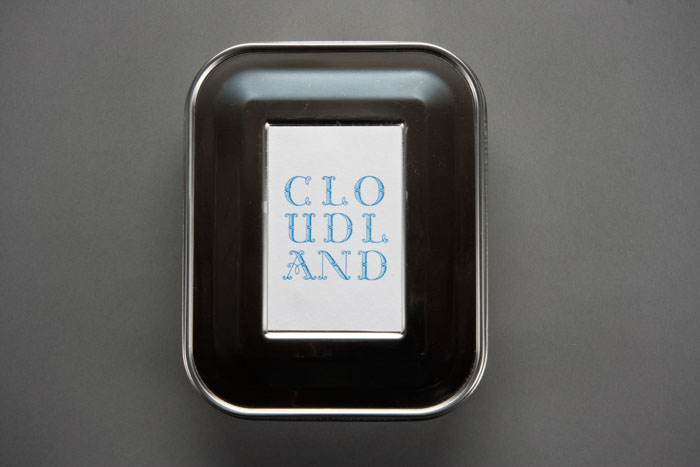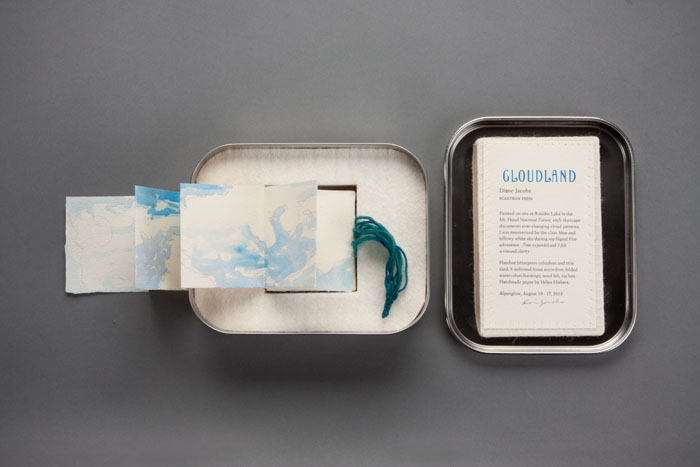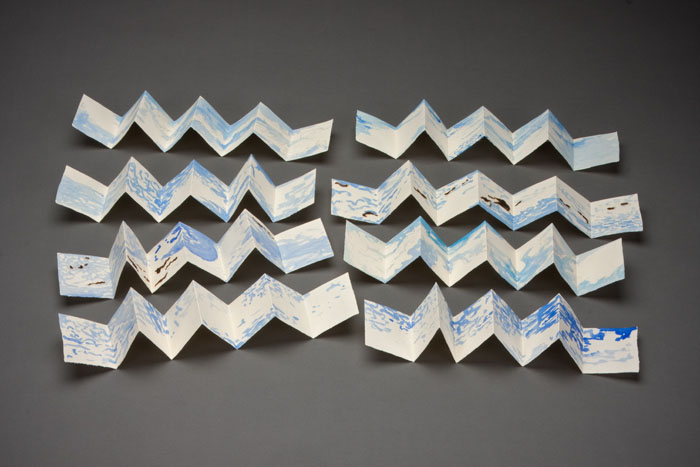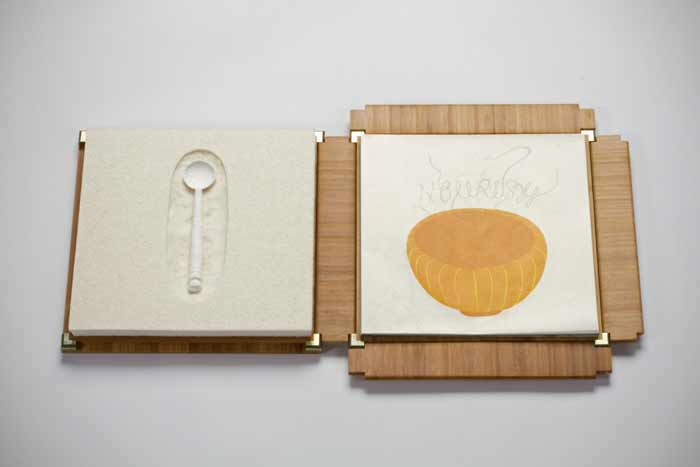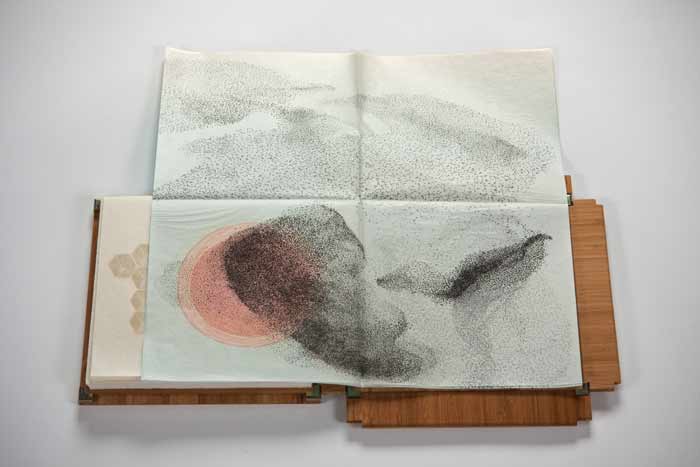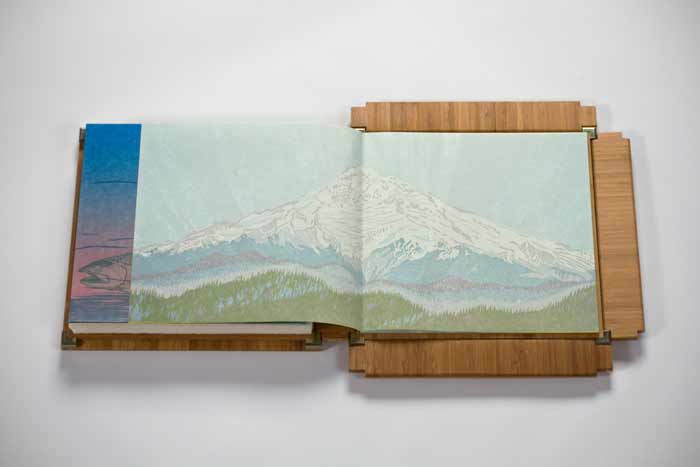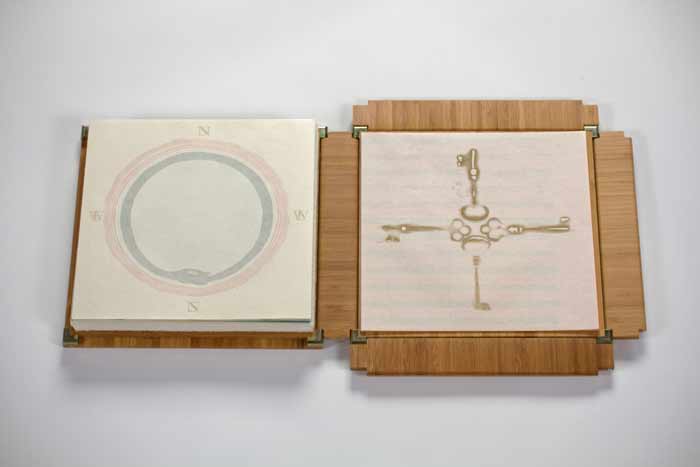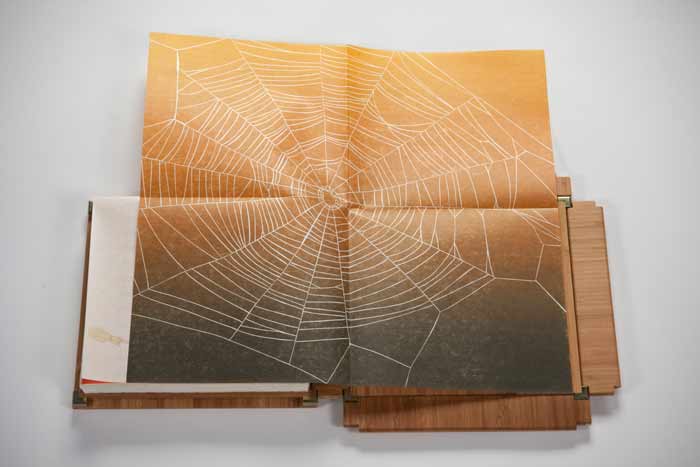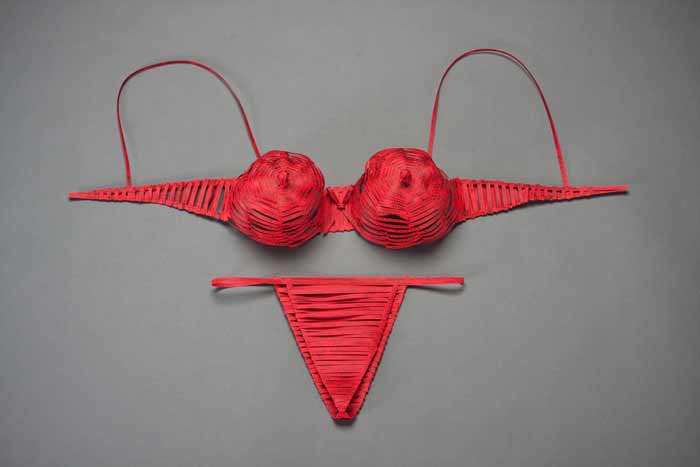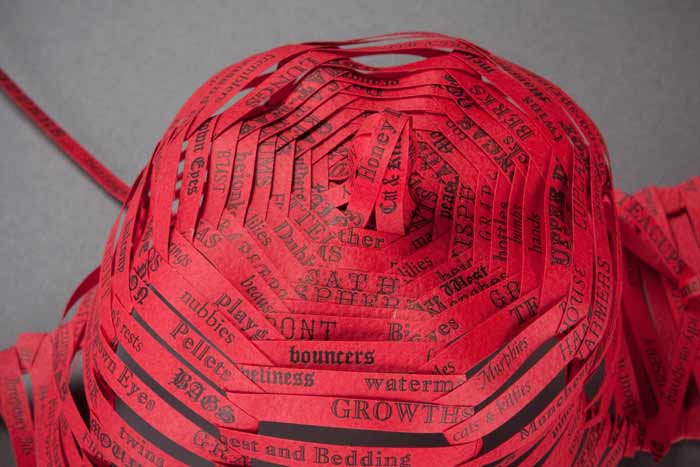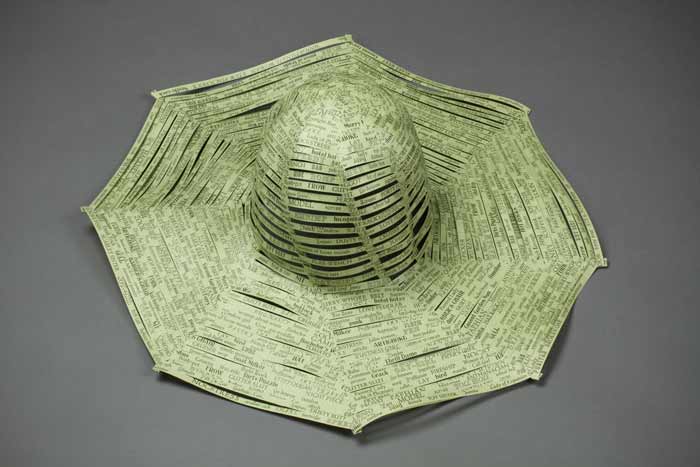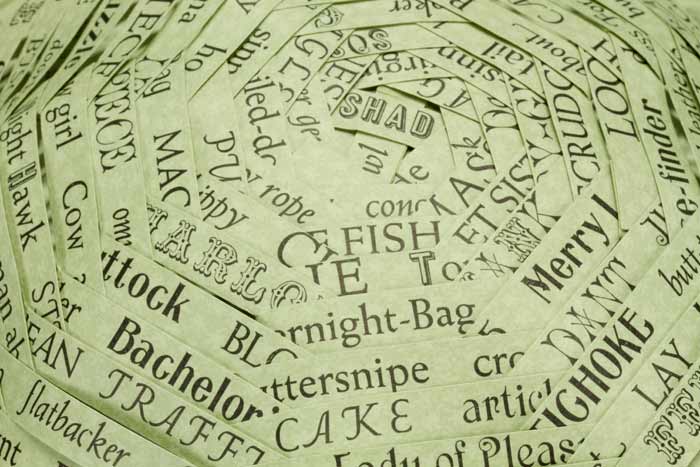I really enjoyed this week’s response by Sarah Bryant on her inspiration and creative process behind Simulations on a Two-dimensional Grid. You can read about it below, but first the specs. Simulations was created in 2013 in an edition of ten. Zerkall paper is used for the pages and have been manipulated with letterpress printing, hand-drawn imagery, wax and folding. The loose pages are bound up in a waxed paper wrapper also decorated with hand-drawn imagery.
Two sources of inspiration are behind this artist book: Barb Tetenbaum’s Aritst Book Idealation Deck and David Allen’s 2011 dissertation. Can you talk about how these two pieces came together as a guide for the concept of this artist book?
So in late 2012, Barb Tetenbaum invited me to participate in a show using a set of cards that she and Julie Chen had developed over several years called “The Artist Book Ideation Deck.” The deck has categories for structure, paper, layout, technique, text, image, color, and description. It also has “adjective” cards. Barb and Julie drew random hands from this deck for all of the artists who would be making a book for the show. My hand went as follows:
Imagery: none
Structure: unbound/boxed
Text: collaborate with writer/poet/other
Layout: across folds
Color: favorite
Technical: hand drawn, painted/collaged, etc.
Paper: pre-treated, crumpled, painted, pasted, etc.
Describe: narrative
Adjectives: personal, scientific, ordinary, complicated, colorful
Dave Allen and I had been talking at this point about collaborating on a book, (this was just before his visit to the UK and the beginning of our Figure Study project,) so I turned to him for some text. He sent me a few excerpts from his PhD thesis for the University of Michigan and I selected this one: Simulations on a two-dimensional grid reveal that if the conditions are met to destabilize the spatially homogenous equilibrium then individual patches cycle out of phase with their neighbors. At any particular time the grid has a checkerboard-like structure (Figure 2.1), and through time individual patches exhibit a two-cycle.
We worked together to pair it down to the following: Simulations on a two-dimensional grid reveal that if conditions are met to destabilize the equilibrium, individuals cycle out of phase with their neighbors. This felt more like a universal text, open-ended enough to invite us in and call for different interpretations.
Once the text was selected, it was time to work with it and knead it into a book using the external prompts that came from the Ideation Deck. I used a series of folds, expanding from sheet to sheet, to disturb a grid made up of holes and lines. I loved this project, it forced me to do some new things that I surely wouldn’t have attempted without a set of instructions. Waxing the pages, for example. Also the loose sheet format that I have adopted for two subsequent projects.
Several people have pointed out that my book is not strictly following the guidelines set by the deck. It does have imagery, for example, even if that imagery is minimal. And of course this is true. But the deck is meant to generate ideas, and so I considered the cards as prompts rather than unbreakable rules. You can still get the decks, by the way. I use mine all the time in classes or just to get my mind moving.
– – – – – – – – – – –
Setting limitations for a project can bring unique challenges and even heighten creativity. I was so thrilled to learn about Tetenbaum and Chen’s Idealation Deck. I may need to get my own copy and begin exploring artist books again.
If you’d like to read a more in-depth description of Simulations, check out Heather Doyle-Maier’s review on the Abecedarian Gallery Blog, where she describes the tactile qualities of the book.
